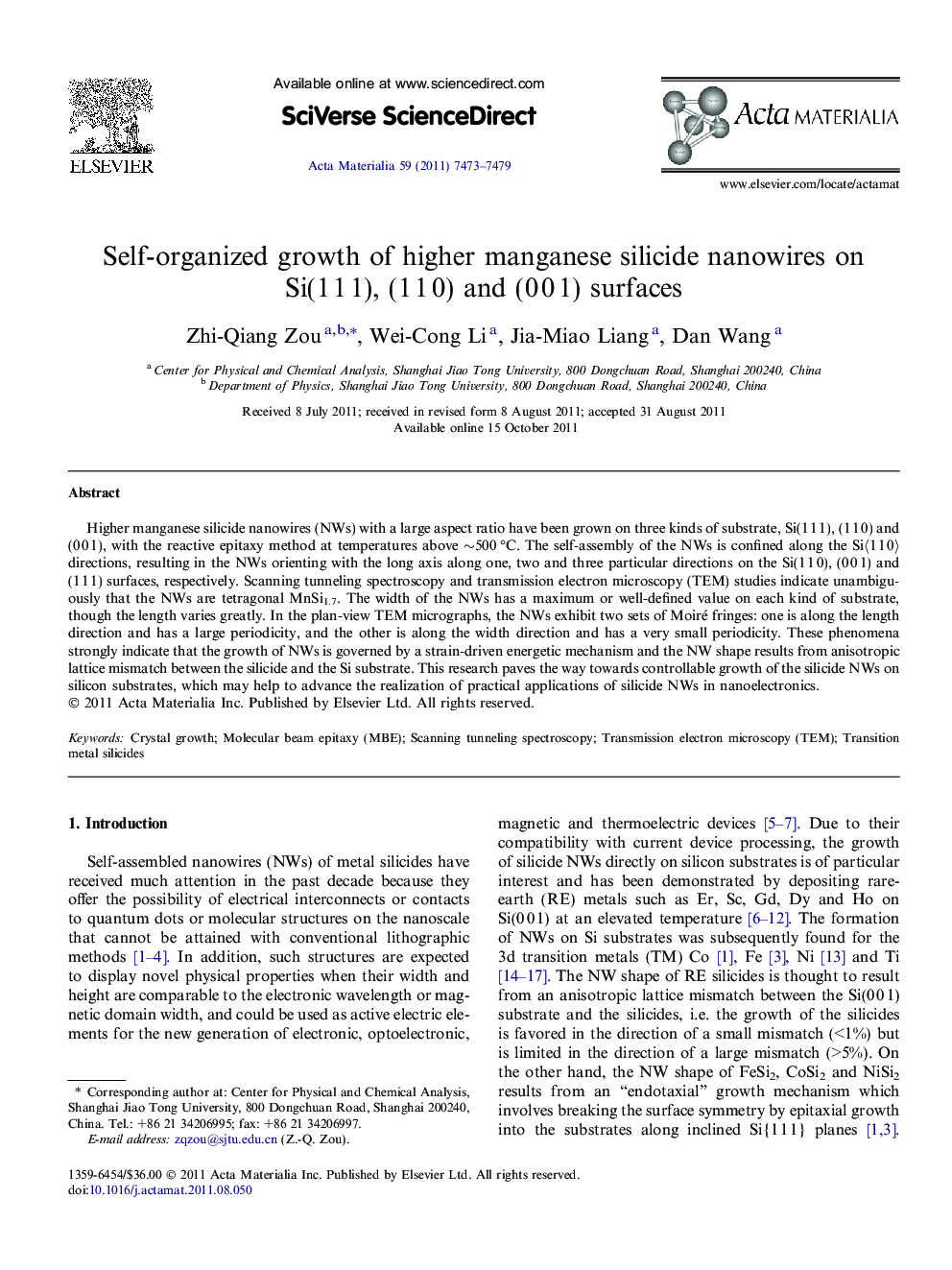| Article ID | Journal | Published Year | Pages | File Type |
|---|---|---|---|---|
| 10620342 | Acta Materialia | 2011 | 7 Pages |
Abstract
Higher manganese silicide nanowires (NWs) with a large aspect ratio have been grown on three kinds of substrate, Si(1 1 1), (1 1 0) and (0 0 1), with the reactive epitaxy method at temperatures above â¼500 °C. The self-assembly of the NWs is confined along the Siã1 1 0ã directions, resulting in the NWs orienting with the long axis along one, two and three particular directions on the Si(1 1 0), (0 0 1) and (1 1 1) surfaces, respectively. Scanning tunneling spectroscopy and transmission electron microscopy (TEM) studies indicate unambiguously that the NWs are tetragonal MnSi1.7. The width of the NWs has a maximum or well-defined value on each kind of substrate, though the length varies greatly. In the plan-view TEM micrographs, the NWs exhibit two sets of Moiré fringes: one is along the length direction and has a large periodicity, and the other is along the width direction and has a very small periodicity. These phenomena strongly indicate that the growth of NWs is governed by a strain-driven energetic mechanism and the NW shape results from anisotropic lattice mismatch between the silicide and the Si substrate. This research paves the way towards controllable growth of the silicide NWs on silicon substrates, which may help to advance the realization of practical applications of silicide NWs in nanoelectronics.
Keywords
Related Topics
Physical Sciences and Engineering
Materials Science
Ceramics and Composites
Authors
Zhi-Qiang Zou, Wei-Cong Li, Jia-Miao Liang, Dan Wang,
